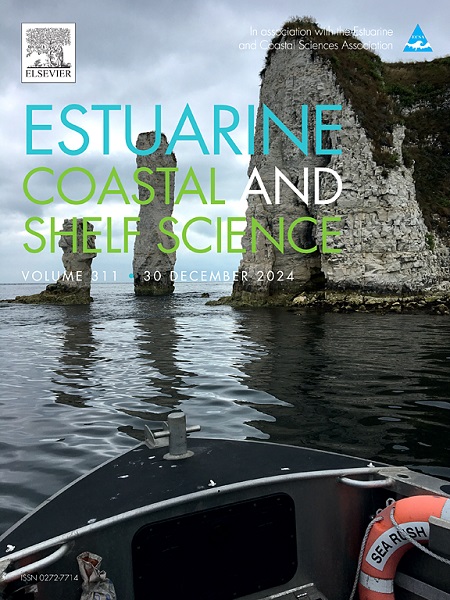水下海草测绘中避免太阳闪烁的斜向无人机摄影测量优化
IF 2.6
3区 地球科学
Q1 MARINE & FRESHWATER BIOLOGY
引用次数: 0
摘要
水下植被,如海草草甸,在蓝碳固存中起着关键作用,并为生态系统服务提供协同效益。基于无人机的水下海草草甸蓝碳监测是一种成本效益高、分辨率高的方法。然而,水面上的阳光闪烁,特别是在阳光充足的情况下,阻碍了无人机测绘的有效性。提出了一种改进的基于无人机的水下海草草甸斜向摄影测量方法。这种方法是专门设计的,以避免太阳闪烁利用衍生理论,相关的太阳角度与无人机万向俯仰角。在东京湾富津滩涂进行的现场试验成功地验证了该方法的可行性。结果表明,在水下海草草甸测绘中,保持云台俯仰角小于55°是获得清晰正射影像的关键。太阳方位角的变化极大地限制了阳光条件下斜向摄影测量的有效测绘窗口。与垂直摄影测量相比,倾斜摄影测量的重投影误差高出10.9%,地面样本距离增加8.9%,每张图像的自动结点减少24.2%。该方法在阳光条件下将有效制图窗口延长了40分钟,精度损失可控(GSD增加8.9%),展示了对水下海草生态系统蓝碳量化的操作价值。本文章由计算机程序翻译,如有差异,请以英文原文为准。
Optimization of oblique drone photogrammetry for avoiding sun glint in submerged seagrass mapping
Submerged vegetation, such as seagrass meadows, plays a pivotal role in blue carbon sequestration and provides synergistic benefits to ecosystem services. Drone-based monitoring of blue carbon in submerged seagrass meadows is a cost-effective and high-resolution approach. However, the presence of sun glint on the water surface, particularly under sunny conditions, hampers the effectiveness of drone-based mapping. This study presents an improved drone-based oblique photogrammetry method for submerged seagrass meadows mapping. This method is specifically designed to avoid sun glint by leveraging a derived theory that correlates solar angles with the drone gimbal pitch angle. Field experiments conducted in the Futtsu Tidal Flat of Tokyo Bay successfully investigated the feasibility of the proposed method. The results indicate that it is crucial to maintain a gimbal pitch angle of less than 55° to obtain clear orthophotos when mapping submerged seagrass meadows. Variations in the solar azimuth angle significantly constrained the effective mapping window for oblique photogrammetry under sunny conditions. Compared to vertical photogrammetry, oblique photogrammetry exhibited a 10.9% higher reprojection error, an 8.9% increase in ground sample distance, and a 24.2% decrease in automatic tie points per image. This method extends the effective mapping window by 40 minutes under sunny conditions with controlled accuracy loss (8.9% GSD increase), demonstrating operational value for blue carbon quantification in submerged seagrass ecosystems.
求助全文
通过发布文献求助,成功后即可免费获取论文全文。
去求助
来源期刊
CiteScore
5.60
自引率
7.10%
发文量
374
审稿时长
9 months
期刊介绍:
Estuarine, Coastal and Shelf Science is an international multidisciplinary journal devoted to the analysis of saline water phenomena ranging from the outer edge of the continental shelf to the upper limits of the tidal zone. The journal provides a unique forum, unifying the multidisciplinary approaches to the study of the oceanography of estuaries, coastal zones, and continental shelf seas. It features original research papers, review papers and short communications treating such disciplines as zoology, botany, geology, sedimentology, physical oceanography.

 求助内容:
求助内容: 应助结果提醒方式:
应助结果提醒方式:


